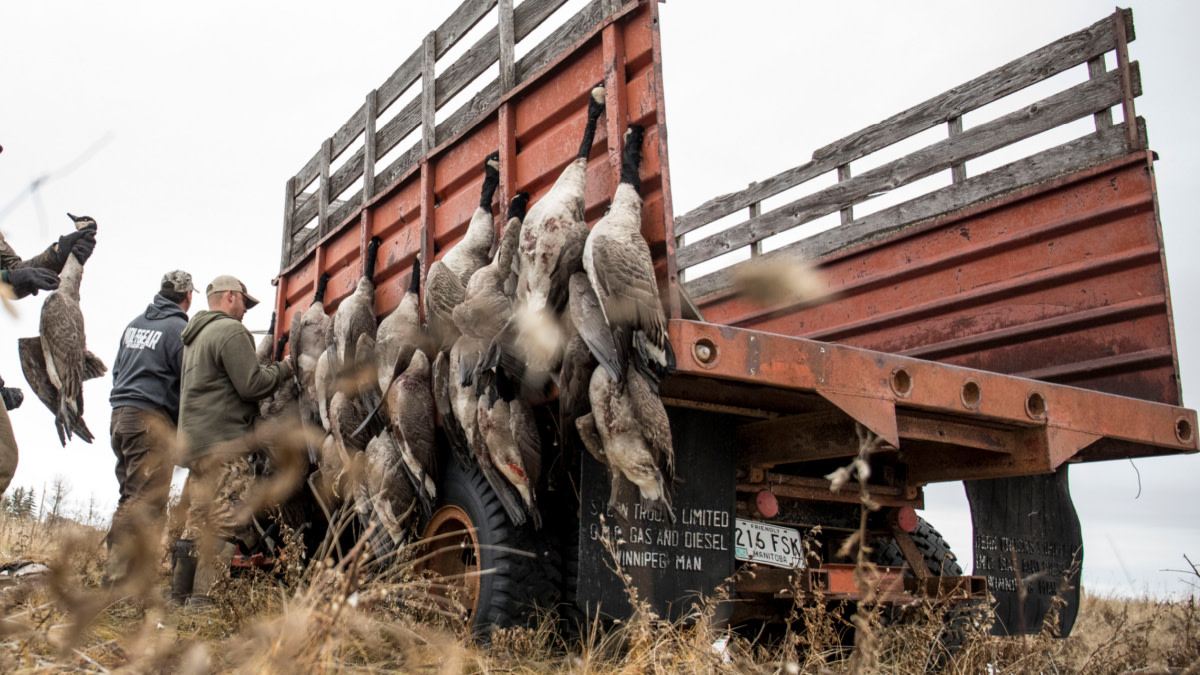
If guiding and hunting in the Central Flyway has taught me anything, it’s how to scout hard and get hunting permission. Don’t get me wrong, I do my fair share of striking out; I was turned down by 18 different landowners on my worst night of permission seeking. But with a little luck and a lot of practice, you can get consistent permission and add to your lineup of hunting spots.
Burn Rubber If you’re going to start knocking on doors and cold-calling for waterfowl ground, you shouldn’t be targeting areas with traditionally high concentrations of birds. If you show up looking to hunt private land in Stuttgart, Arkansas or Butte Sink, California without connections or a checkbook, you probably won’t do any hunting at all.
Broadly speaking, door-knockers need to look for ground that’s only going to sometimes hold birds. A field or pond always covered up in birds is usually going to be leased. But what a door-knocker needs is a pocket of birds on untouched, lease-free ground and a landowner that’s receptive to a stranger going hunting on their property. That’s a big ask—and it’s going to require a lot of miles to get away from the popular areas.
In South Dakota, one of the states where door-knock permission is still the norm, a typical night of scouting for me regularly breaks over 225 miles. It’s a lot, but what those 225 miles get me is some distance from the crowds and the leased ground.
Use The Internet to Your Advantage It was only a few years ago that you had to go to each county’s courthouse and buy an overpriced plat book to figure out who owned the land. I still have at least 50 plat books from various states and counties, but onX has since filled in much of that information at a much lower cost to the user and with much easier access. I haven’t broken out my plat books in two full seasons, and now my onX account is a collection of past bird patterns, permission experiences, and hunt success.
And as great as that is, onX on its own doesn’t quite get you across the finish line. You still need to talk to the landowner. Once you have the landowner’s name from onX, a quick search for their name and town will give you a house address to stop in at. Most of the time, this process will only take me about 30 seconds while I’m in the field watching feed.
Treat Them How Your Grandpa Would Want You To This part is all about manners. You’re asking someone to be allowed on their land, you’re taking up some of their time, and they don’t have to say "yes." Respect for them and their property should be the standard.
Make sure you’re clear and concise about what it is you want to do, have your map pulled up to show where you want to hunt, use "yessir" and "yes ma’am," and if you’re able, offer some sort of gift. Here’s an example.
“Good evening Mr. Smith, my name is Sean Weaver. I hope I’m not keeping you from anything important, but I was wondering if I could do some duck hunting on some of your land. It’s a cornfield on the northwest corner of 100th Street and 200th Avenue. Here, I have it pulled up on this map. It would be myself and 3 friends hunting there just Saturday morning, and I’d be happy to drop off a case of beer for you after the hunt.”
From there, it’s just being a conversationalist. If they say "no" or "yes," say "thank you" and go on your way. If you get a wishy-washy “I don’t know,” just hang around and talk for a little while. It might not lead anywhere and that’s OK. More often than not, they just want to get to know the stranger at the door. This leads me to the most important and final point.
Don’t You Dare Burn Bridges This point is more about hunters collectively keeping permission than it is about getting it for yourself. You’re rarely going to be the first person that has ever asked to hunt, and there’s a whole host of reasons you’re going to get turned down: Their family and friends hunt, they don’t want you to damage the land or crops, they have safety concerns for their livestock or themselves, or they just don’t know you and don’t trust you. These answers are all part of the process, and you have to accept it for what it is.
But most of those denials come from bad experiences with saying yes. Unfortunately, I’ve heard farmers talk about one bad experience giving permission that burns the bridge and ruins it for the rest of us. A farmer that was a “yes” gets turned into a “no” through bad actions and conduct. Here’s a short list of how to avoid being the guy that ruined a farmer.
1. When in doubt, walk it in. If it seems too muddy or sloppy, do the work and walk in your gear. Don’t rut up their fields with your truck.
2. Close every gate. No rancher wants to get a call about his cows being out on the highway.
3. Invite them. Taking the farmer or his kid along for the hunt is a meaningful gesture that can lead to great friendships and relationships.
4. Don’t call the farmer to argue over permission. If other hunters show up to the field saying they have permission, just hunt together. My analogy is kids and toys. If the kids are fighting over a toy, odds are they both end up losing the privilege to play with it.
5. Keep your distance from their buildings. If you can’t, make sure you discuss it ahead of the hunt.
6. Keep your vehicles out of their way. Make sure you’re not blocking areas where they drive farm equipment.
7. Pick up your empty shells and trash. It takes 20 seconds.
Most of all, maintain the relationship. Drop off a gift, offer up some of the meat, check in with them from time to time, meet up for drinks, or just talk about something other than hunting. When landowners and hunters are friendly with each other and on the same page, more doors to hunting permission start to open.
Feature image via Captured Creative.








